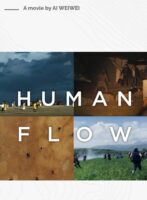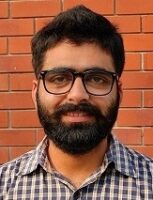Last Updated on December 21, 2021 by themigrationnews

Whenever any hurdle arises in international trade flows, it acquires over the top attention at the global level. The ‘Suez Canal’, which is the shortest sea trade route between Asia and Europe, got blocked in the March 2021 for a few days, when one of the longest shipping containers named as ‘Ever Given’ ran aground in middle of it. A similar incident about the supply chain disturbance involving the route disruption of cargo shipping from China and Vietnam towards the Europe and North America was hitting the headlines as well. These issues are articulated as the crisis of global economy and the losses from these disruptions are quantified in billions of dollars. Besides these global issues, a human flow incidence, involving a gathering of thousands of Haitian migrants, who wanted asylum, under a bridge connecting Mexico with The United States of America (USA), didn’t attract as much media coverage as trade flow incidents did. The American security forces started to deport them back to their country. The misery of these migrants has not been articulated as the crisis of the global system. Many migrants have lost their lives, especially in case of asylum seekers and refugees travelling through dangerous routes, which they choose to cross their national borders. The loss of their lives has not received the attention it deserves at the global level.
There is an asymmetry in the present phase of globalisation. The biasedness in its liberal architecture skews towards the free movement of goods, capital, and finance across the national boundaries, while the process of international migration regulates through border security and restricted immigrant policies. It dehumanises the cross-border movements of millions of people, when they have to cross the national borders through irregular channels as refugees. The need to discuss the issue of refugee crisis also becomes clear from the World Bank’s Migration and Development Brief 33. The report highlights the fact that there are 79.5 million forcibly displaced persons around the world as of June 2020. These persons include – 26.0 million refugees, 45.7 million internally displaced persons, 4.2 million asylum seekers, and 3.6 million Venezuelans displaced abroad. In the context of forcible mobility of human beings, a documentary named as “HumanFlow” directed by Ai Weiwei provides a deep insight into the given global crisis. The documentary includes short interviews of the Migration Studies’ experts, The United Nation’s employees, and refugees residing in different countries. In addition to this, the director captures the living conditions of displaced population in different refugee camps and the route flows of the displaced population.
Forcible Displacement of People and the Global South
Political wars, terrorism, religious and racial conflicts, and natural disasters are the identified factors that cause the forcible displacement of people. There can be a single factor to drive displacement or the presence of various interwoven factors that cause forced displacement. Displaced population is categorized as internally displaced or internationally displaced population, which is similar to the volunteer migration. The flow of internationally displaced population from the global south to the global north is greater than the flow that occur within the global south countries. Some of the global south countries act as transit points in the international flow of displaced people. Due to the border restrictions, the transit countries also become final destinations when displaced persons fail to reach at their planned destinations. “Human Flow” covers the problem of forcible displacement across all the regions of global south with their own regional specific characteristics. According to the given documentary, Syria is the biggest driver of displacement and The Syrian war is its driving force. About 1.3 million Syrians have crossed the Syrian-Jordan border for seeking shelter. Europe has also received a greater number of Syrian asylum seekers in near past. In Asia, Myanmar and Afghanistan are the two main countries in which forced displacement occurs on a large scale. Due to the religious conflict of Muslim minor community known as Rohingya in Myanmar, approximately half million Rohingyas have fled to Bangladesh, Thailand and, Malaysia. Afghanistan is the most violent and unstable country in the world. Insecurity, violence, and violation of fundamental human rights displaced the citizens of Afghanistan, who then fled to Pakistan, Europe, and North America for asylum. In Africa, the climate change is the major driving force of displacement. The number of refugees from Africa is rising due to famine and hazardous climate conditions. Similarly, the director focuses on the cases of displacement population in Iran, Iraq, Turkey, Palestine, Mexico and Lebanon. Among the global south countries, Lebanon, Pakistan, Bangladesh, Turkey, and Kenya are the host countries for the refugee population.
Europe and its hosting of Forcible Displaced People
The Charter of the Fundamental Rights of European Union (EU), 2000 describes that the union founded the basis of indivisible and universal values of human dignity, freedom, equality, and solidarity. Nevertheless, the documentary shows that treatment received by the refugee migrants, lacks these fundamental rights. Greece, Italy, Germany, Turkey, and France are the major hosting European countries for refugees. During the year 2015-16, 30 lakhs refugees stayed in Turkey, followed by 12 lakhs in Germany, 10 lakh in Greece, 2.10 lakh in Italy, and 0.10 lakh in France. The location of Turkey attracts a specific attention, acting as a stop enroute for refugees towards Europe, since it is a transcontinental nation and plays the bridge between Western Asia and Eastern Europe. The given documentary highlights that the official camp for refugees in Turkey provides shelter only to the ten percent of refugees. Furthermore, in March 2016, EU and Turkey ratified an agreement to stop the refugee flow from Turkey to Europe. According to this agreement, EU can send the refugees back to Turkey. In return, EU provides 6 billion Euros in aid to Turkey. Dr.Cem Terzi from the Association of Bridging People states that the EU-Turkey agreement is not favourable for refugees, as Turkey only provides the temporary protection to the refugees. In other European countries, the director displays that the conditions of refugees are not well in political and economic terms. One of the African refugees in Paris states that Europe has been seen as the pillar of democracy, freedom, human dignity, and human respect. However, these democratic values have been absent in the treatment for refugees.
Dehumanisation of Human Mobility
Multiple elements can make cross-border movements precarious for refugees. An economically and politically well-being person perceives the journey of sea through ship and desert safari as a holiday trip. The given documentary displays the different images of overseas movement and desert crossing. The overseas and desert crossing pose life threats to displaced people due to the lack of basic facilities for their survival. When 700-720 refugees from North Africa crossed the Mediterranean in small boats and reached at Southern Italy, the security forces of Italy wrapped them with polythene sheets to save them from the cold wind. It clearly indicates the position of refugees, as human beings are being dehumanized by the host countries. Dr. Hanan Ashrawi, who is the head of Palestine Liberation Organisation states, “Being a refugee is much more than a political status. It is the most pervasive kind of cruelty that can be exercised against a human being by depriving the person from all forms of security, the most basic requirement of a normal life.” The routes chosen by the forcibly displaced persons are life threatening. In 2016, more than 5000 refugees drowned while crossing the Mediterranean Sea. Also, the refugees, once they enter into Europe, need to cross the borders of at least three countries if they want to reach Paris to apply for asylum.
Gender and Children related Perspectives of Forcible Displacement
In migration studies, women and children capture specific attention owing to their vulnerable positions. The director focuses on these issues to articulate the problems of displaced women and children specifically. As far as the women are concerned, the documentary makes it evident that most of the displaced women are sick, suffer from Diarrhoea, or/and underweight. The mobility of displaced pregnant women becomes the most hazardous for their own health and for bearing children. Similarly, the children in the refugee camps deprives from the very fundamental rights of right to life and right to education, since they do not receive the required vaccination and school education. In the documentary, Tanya Chapuisat, the representative of UNICEF in Lebanon, provides information about the condition of children in one of the most populated refugee camps of the world known as ‘Ein Al-Hilweh’. She states the potential threats for the well-being of children living in the camp, “If children grow up without any hope, without any prospect of future, without any sense of their being able to make something out of their lives, then, they will become very vulnerable to all sorts of exploitation including radicalisation.”
Ai Wei-Wei ends the documentary with a sound bite of a Syrian astronaut and refugee Mohammad Faris, which aims to provide a long-term solution to eradicate all types of forcible human mobility across the globe. Mohammad Faris comments, “When I was an astronaut, I saw from space how each human being on earth is a universe. All human beings live in one nation as brother. Syrians, Indians, Chinese, and Americans all live together on this beautiful planet. All live together and all of them must share. Protecting the planet can only happen with solidarity without any manipulation, without injustice, without killing, and without suppression.”

Harjinder Singh has completed M.A. in Economics from the Department of Economics, Punjabi University, Patiala, Punjab. He is currently pursuing his Ph.D. in Social Sciences, focusing on International Migration with a multidisciplinary approach. He has been awarded Junior Research Fellowship from University Grants Commission. His areas of interest include – Political Economy of Development, Migration and Development Studies, Globalization and Local Transformations, Agrarian Studies of the Third World, and Economic Theories. He is also fond of reading poetry and historical studies. Twitter: @harjinderecon
